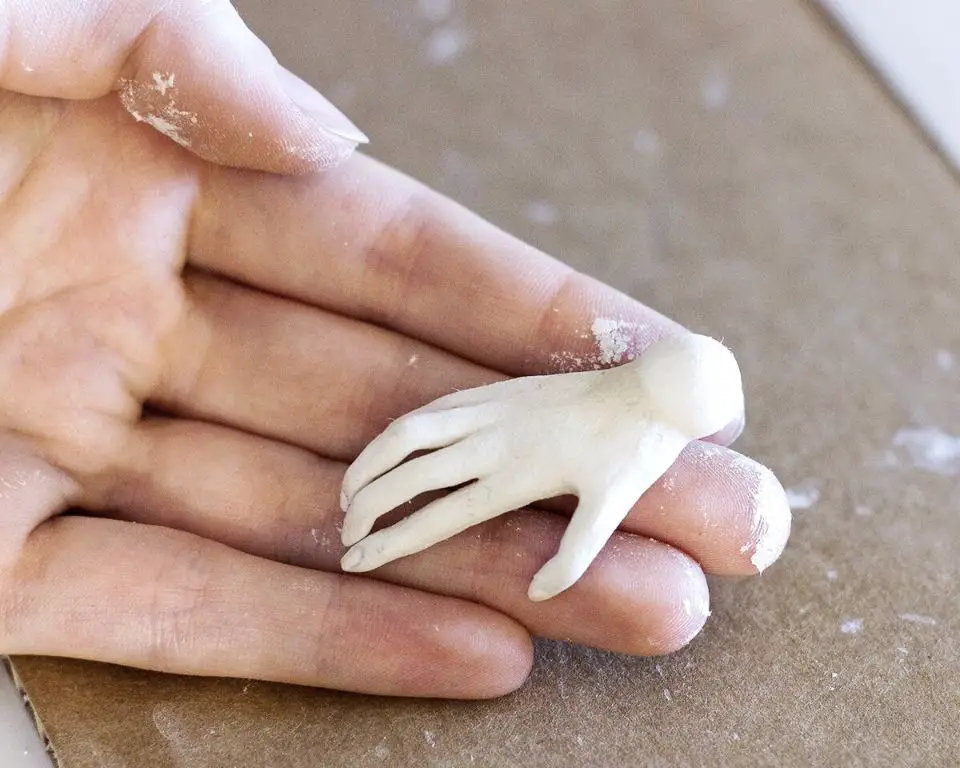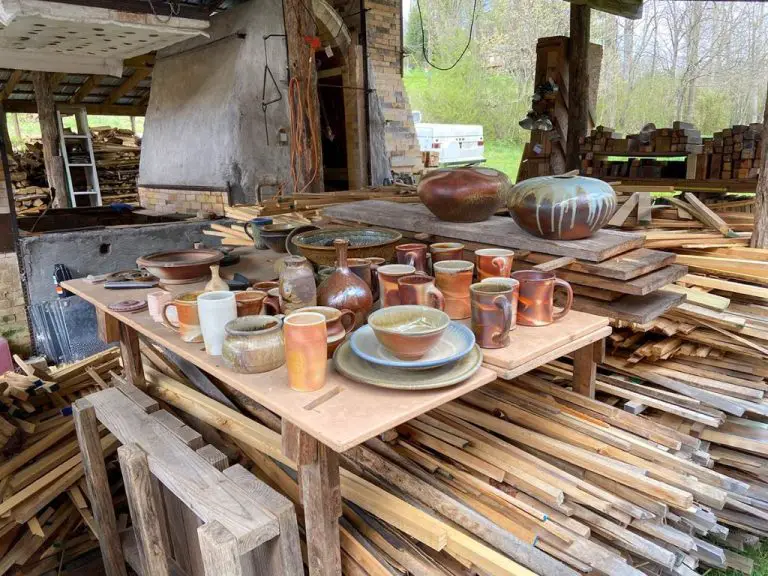Is Air Drying Clay Good?
What is Air Drying Clay?
Air drying clay, also called air dry clay, is a water based modeling material made primarily from natural clays and fillers that solidify as they dry in the air [1]. When exposed to air, the water evaporates and the clay hardens. It is a pliable, versatile material often used for arts and crafts, DIY projects, mold making, and modeling.
There are several types of air drying clays, which may contain varying ratios of clay, cellulose, gypsum, starch, and other ingredients. Some common varieties include [2]:
- Natural clay – Made from natural clays like kaolin.
- Cellulose-based – Contains wood pulp or paper pulp.
- Gypsum-based – Uses plaster of paris as a base.
- Starch-based – Uses starch binders like flour or cornstarch.
- Hybrids – Blends of the above, like clay and cellulose.
The exact formula determines properties like dry time, durability, texture, and color. Manufacturers mix in various fillers to modify qualities and reduce production costs compared to pure clays.
Benefits of Air Drying Clay

One of the main benefits of air drying clay is that it doesn’t require baking or firing in a kiln. Air drying clay dries naturally at room temperature, which makes the process much faster and easier compared to clays that require firing [1]. This allows projects to be completed start to finish more quickly.
Air drying clay will normally dry within 24-48 hours if left in open air, though drying times can vary. The clay remains workable even as it starts to dry, making adjustments easy during the drying process. Any cracks or breakage can often be fixed by adding water to rehydrate and smooth seams [2].
Clean up is straightforward with air dry clay – simply wash away any residue with water while it’s still moist. Once fully dry, the clay won’t dissolve in water anymore.
If the clay is sealed in an airtight container, it can be reused later if kept moist. This makes air dry clay very affordable and economical compared to clays that can only be used once.
Limitations of Air Drying Clay
Air drying clay has some drawbacks compared to other clays like polymer clay or oven-baked clay. Three main limitations of air drying clay are:
Air drying clay is less durable than baked clay. According to The Art of Education, air drying clay is very brittle when dry and can easily break or crack 1. It does not reach the same hardness as clay that has been fired in a kiln.
Air drying clay only has a limited time to work before it starts drying and becomes difficult to manipulate. Pieces made with air dry clay need to be formed relatively quickly before the clay begins to stiffen and dry 2.
Because air dry clay dries through evaporation, it is limited in the level of fine detail that can be achieved. Intricate shapes and patterns can warp or crack as the clay dries. Baked clays can hold greater detail without damage during drying.
Best Uses for Air Drying Clay
Some of the best uses for air drying clay are for making crafts, jewelry, decorations, small sculptures and kids’ projects. Air dry clay is ideal for these types of projects because it does not require firing. This makes it perfect for temporary pieces as well as items made by those new to working with clay.
Air drying clay works especially well for simple craft projects and decorative pieces. Due to its lightweight and air-dry properties, air drying clay can be easily shaped and molded into jewelry, beads, buttons, figurines and other decorative items without the need for additional tools or equipment. These types of projects often do not require high durability or strength, making air drying clay an ideal choice.
Air drying clay is also frequently used for making small sculptures and figurines. The clay can be molded into detailed shapes and designs, making it versatile for creating miniature people, animals, objects or abstract art pieces. These types of sculptures do not need to withstand heavy use or forces, so the lightweight nature of air dry clay makes it a suitable option. Sculptures made from air drying clay make wonderful gifts, collectibles or home decor accents.
Kids also love working with air drying clay for simple crafts and projects. The clay is easy to mold and shape, allowing kids to make a wide range of fun creations. From homemade play dough recipes to molded pots or DIY action figures, air dry clay enables kids to sculpt and build while developing creativity and fine motor skills. Because air dry clay does not require firing, it makes an accessible and mess-free crafting material suitable for classrooms or home use.
In summary, air drying clay is a versatile material that works well for crafts, jewelry, decorations, small sculptures and kids’ projects. Its air-dry properties and ability to be easily shaped make it an ideal choice for these types of temporary, decorative and easy-to-make pieces.
Working with Air Drying Clay
When working with air drying clay, it’s important to properly prepare and handle the clay to achieve the best results. Here are some tips:
Knead the clay thoroughly before starting to remove any air bubbles. This helps make the clay soft and pliable so it’s easier to shape. According to wikiHow, kneading for 5-10 minutes is ideal for conditioning the clay. [1]
Work on a non-porous surface like glass, plastic or metal. Porous surfaces like wood can absorb moisture from the clay causing cracks. Gathering Beauty recommends working on a ceramic tile. [2]
Keep the clay moist when not working by storing it in an airtight container or plastic wrap. Adding a damp paper towel can help retain moisture. Letting the clay dry out makes it difficult to manipulate.
Allow plenty of time for projects to dry thoroughly before painting or sealing. Drying time depends on factors like thickness but can take 24-48 hours. Rushing this step risks cracks or weak spots.
Storing Air Drying Clay
Air drying clay must be stored properly to maintain its pliability and workability. According to research from Susie Benes, air drying clay should be stored in an airtight container to prevent it from drying out. Place the clay in a sealable plastic bag or container, removing any excess air, and seal it closed. You can also wrap the clay in plastic wrap or cling wrap before placing it in the airtight container.
It’s also important to keep air drying clay damp while stored. Experts recommend placing a damp paper towel or wet cloth in the storage container with the clay. The moisture will prevent the clay from hardening and cracking over time. For long term storage, air drying clay can be frozen to keep it fresh for months. Just allow the frozen clay to fully thaw and return to room temperature before using.
When stored properly in an airtight container and kept moist, air drying clay can be stored for weeks at room temperature or months if frozen.
Safety Tips
Air drying clay is labeled non-toxic, however it can still irritate sensitive skin for some users. Prolonged skin contact may cause dryness or mild irritation so it’s recommended to wash hands thoroughly after use.
Sanding and carving dried clay produces fine dust particles that can irritate the respiratory tract if inhaled. Work in a well-ventilated area and use a dust mask when sanding clay creations. Vacuum work areas regularly to minimize dust buildup.
Even though air drying clay is not toxic, small pieces could present a choking hazard for young children. Keep clay out of reach of babies and supervision is recommended for older kids using the clay.
Following basic safety precautions allows crafters to enjoy working with air drying clay while minimizing potential health risks.
Popular Brands
There are several popular brands of air dry clay that are widely available and used by artists and crafters. Some of the top options include:
Crayola Model Magic
Crayola Model Magic (https://www.susiebenes.com/blogs/airdryclayart/one-clay-to-rule-them-all-air-dry-clays-for-artists) is one of the most popular air dry clay brands. It’s lightweight, non-toxic, and fast-drying. It’s a great choice for kids’ crafts and school projects. Model Magic comes in a variety of colors and can be painted once dry.
ACTIVA Air Dry Clay
ACTIVA Air Dry Clay (https://www.artnews.com/art-news/product-recommendations/best-air-dry-clays-1202689529/) is a high-quality air dry clay that is smooth, pliable and doesn’t crack easily. It’s available in white and terracotta. ACTIVA is a good choice for detailed sculptures, jewelry making, and decorative pieces.
Darice Air Dry Clay
Darice Air Dry Clay is an affordable clay that comes in white and terracotta. It has a smooth, creamy texture that is easy to work with. Darice clay can be painted with acrylics and holds fine detail well. It’s a popular choice for crafting and kids’ projects.
Hearty Air Dry Clay
Hearty Air Dry Clay is designed not to crack or flake when drying. It has a soft, pliable texture and can be used to create durable sculptures and crafts. Hearty clay is non-toxic and cleans up with soap and water. It’s available at many craft retailers.
Vs Polymer Clay
Polymer clay and air dry clay are two popular types of modeling clay. They have some key differences in their properties and ideal uses:
Polymer clay requires baking. Unlike air dry clay, polymer clay remains malleable even when exposed to air for extended periods. Pieces made from polymer clay must be hardened in a oven, which cures the clay and makes it durable. Typical baking temperatures are around 130°C (265°F) for 15-30 minutes.
Polymer clay is more durable for detailed sculptures. The baking process makes polymer clay strong and stable. This makes it an excellent choice for detailed sculptures, detailed miniature figures, jewelry making and more. The fine details will remain intact. Air dry clay can lose its details as it dries out.
Air dry clay is better for simple kids’ crafts. Air dry clay is an easy-to-use modeling clay that starts to harden as soon as 1-2 days of being exposed to air. It doesn’t require baking. This makes it a good choice for simple crafts, basic sculptures, and projects with children. Although inexpensive, air dry clay won’t be as strong or stable as a polymer clay sculpture.
Sources:
https://www.sculpey.com/blogs/blog/difference-between-polymer-clay-air-dry-clay
https://2wardspolymerclay.com.au/whats-main-difference-air-dry-clay-and-polymer-clay/
Conclusion
Overall, air drying clay is a great option for simple craft projects. One of its biggest benefits is how fast and easy it is to work with. You don’t need any special tools or equipment – just shape it with your hands. This makes it very accessible, even for beginners and kids. It’s also inexpensive and widely available at most craft stores.
However, air drying clay does have some limitations to be aware of. Since it dries by evaporation, the finished pieces are not as durable or detailed as those made with baking clay like polymer. Air drying clay is best for making basic shapes and items that don’t need to withstand heavy use. The finished surface can dent or scratch easily.
So while it may not be suitable for detailed sculptures or sturdy functional items, air drying clay is perfect for fun DIY crafts, simple decorative objects, and temporary/disposable projects. With reasonable expectations about its capabilities, air drying clay can be an enjoyable, user-friendly modeling material.



